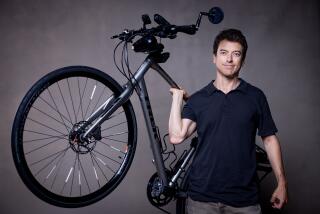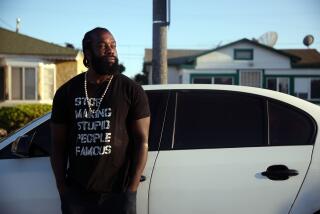Should cyclists be exempt from stop signs?
Let me be honest. When I ride my bike through the streets of Los Angeles, I don’t always stop at stop signs. And when I pull up at a red light, if no one is coming in either direction, I will sometimes cross against the light.
I know it’s illegal. But come on, I’m hardly the only one. I rarely see a cyclist wait at a red light if the coast is clear or come to a complete stop at a stop sign if it doesn’t seem necessary.
So what’s the value of a law that is routinely ignored? That’s a question that has been asked by many people, including Ted Rogers, who hosts the BikingInLA blog. On his site, Rogers suggests that rather than requiring cyclists to follow the exact same rules as motorists, a better approach would be to change the law to reflect what many if not most cyclists already do: “Turn stop signs into yields, and red lights into stop signs.” In other words, cyclists should be given special dispensation so that when they come to stop signs they don’t have to stop, but merely slow and look around and proceed if it is safe to do so. At a red light, they would have to come to a full stop, but if there’s no other traffic coming they could move forward even if the light were still red.
FULL COVERAGE: Sharing the road in L.A.
Rogers didn’t invent this idea. In fact, a law to this effect has been in place in Idaho since 1982 (although it has been modified somewhat over the years) and it has been discussed around the country – and around the world – at least since then. Known as the “Idaho stop” law, it has been found, at least by some scholars, to reduce danger rather than increase it. According to Jason N. Meggs, who conducted a study on the law while working at the UC Berkeley school of public health, stopping at stop signs actually increases the risk of collisions, while treating stop signs as yield signs increases safety for all roadway users, encourages cycling and, importantly, changes a law that has “near universal non-compliance, by everyone from grandmothers to police officers.”
Reforming the stop laws has been gaining some traction in Europe as a way of encouraging cycling and making it safer. In 2012, the city of Paris announced a pilot program to allow bikes to go through red lights at certain marked intersections after yielding to pedestrians and other traffic. Belgium is also considering changing its red light rules, in part to smooth the flow of traffic at corners where too many bikes are clogged up waiting for a green light.
You might think that, as a chronic scofflaw, I would support such changes in the law here at home. It would bring the law in line with my behavior, rather than the other way around. Yet there’s a part of me that thinks just maybe it is me who should be changing.
I mean, it’s one thing to have a law like this in Idaho, which is 165 times bigger than the city of Los Angeles but has less than half as many people. But will it work in a major metropolis? While I could perhaps be persuaded that the city should treat stops signs as yield signs in certain of L.A.’s sleepier residential neighborhoods, I think red lights at four-way intersections ought to be inviolate. Looking both ways is not sufficient, in my view, and bicyclists going through red lights would confuse motorists and increase anarchy on the roads.
I’m all for it in Idaho if it works for them. But when it comes to Los Angeles, a red light ought to mean what a red light means almost everywhere else in the world: Stop and do not proceed.
I am curious, though, what others think. Am I missing the point? Would it not be more dangerous than the current system? Is there anyone out there who has ridden in Idaho?
ALSO:
Send us your video of bike-lane roadblocks
A cyclist asks: What are the rules of the road?
This post is part of an ongoing conversation to explore how the city’s cyclists, drivers and pedestrians share and compete for road space, and to consider policy choices that keep people safe and traffic flowing. For more: latimes.com/roadshare and #roadshareLA.
More to Read
A cure for the common opinion
Get thought-provoking perspectives with our weekly newsletter.
You may occasionally receive promotional content from the Los Angeles Times.











